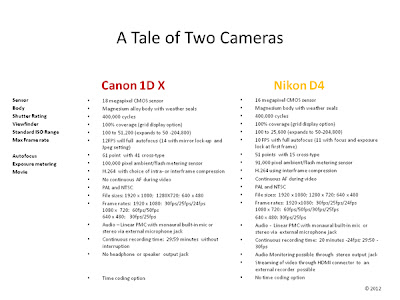Both the gift-giving holiday season and CES 2011 have come and gone: The E-PL2 was the only ILML (Interchangeable lens – Mirror-less) camera announced at CES; and there were no HDSLR announcements made. It leaves one wondering if the heavy consumer focus of CES was a deterrent for camera makers to introduce important but niche HDSLR/DSLR product, opting instead to focus on more mass market compact cameras and camcorders; or if the technologies they are considering for HDSLRs/DSLRs are still under development or are being tweaked. There were, nevertheless, some interesting features shown on some of the compact and advanced cameras introduced that may be included on more cameras in the future.
I have long said that if you want to get a preview of coming attractions on HDSLR/DSLR cameras that one needs to look at the mass consumer camera models. Live view, filter options, and video were features in these cameras before they found their way into HDSLRs/DSLRs. Think about it, the easiest way to get people to trade up to newer, more capable and more expensive models, is to include features they are accustomed to. Working photographers may also have an affinity for products which give them a technological edge.
So, here are a few features included on some of the recently announced cameras that would be nice to see on HDSLRs of the future:
• Kit lenses or a range of lenses optimized to perform silently while auto focusing/continuous auto focusing during video capture.
• Stereo audio capability while recording video;
• Variable frame rate speed recording options: The Fuji FinePix HS20 super zoom, an advanced camera model, offers variable/high speed movie recording options tied to resolution choice; from 30 frames per second at 1920 x 1080 to 320 frames per second at 320 x 112.
• Built in Wi-Fi: If a feature like this can be included in a under-$200 Samsung sh100 compact…
• Larger OLED touch screens (like the 3.5” screen on Sony’s TX100V Camera.)
• The ability to capture stills and video simultaneously like several of the newly announced Sony compact cameras which have Dual Rec Mode. As of this writing, the Panasonic GH2 is the only HDSLR/ILML camera with the ability to simultaneously record stills and video without video interruption.
And why not look to some recently introduced camcorders to see if there are some features that might make sense for HDSLRs as well.
Canon introduced two new camcorders the XA10 Professional Camcorder and the Vixia HF G10 and after reviewing the specs for both camcorders, it seems that the only two features they are missing for some movie camera enthusiasts are interchangeable lens capability and an APS-C or full frame 35mm-sized sensor. That of course is a different discussion. But the feature, in addition to the 3.5” 922,000 dot LCD, that would be most interesting to have on an HDSLR would be their Touch and Track /Touch Autofocus and Touch Exposure features/system. With Touch and Track, you select the point of interest on the Touch Panel LCD and you will have the subject in focus, regardless of where in the frame the subject moves during the shot. Touch Focus, you can pinpoint a specific area to focus on anywhere in the frame; Touch Exposure enables exposure to be locked or compensated for an area you specify. One can only hope that the camcorder and still imaging design teams are communicating and working together on some things.
There is a nice demonstration of Touch Autofocus on the Canon Vixia HF G10 Features Page:
Click here to view. Once there, click on Touch&Track on the features list to bring up the demonstration.
It will be interesting to watch how things develop.







